We expect the Fed to announce a rate cut of -25 bps, bringing the Fed funds rate target to 2-2.25%, this week. Yet, this decision is unlikely unanimous. Although there has been voice suggesting a deeper cut is needed, we do not it will happen this month. The plan for the balance sheet reduction would stay unchanged – the process is due to complete by end-September. At the accompanying statement, policymakers should upgrade the economic assessment in response to better data flow for June. At the forward guidance, we expect them to open the door for further easing when necessary.
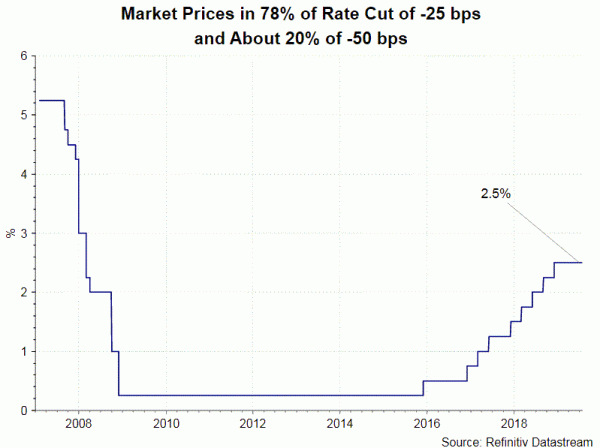
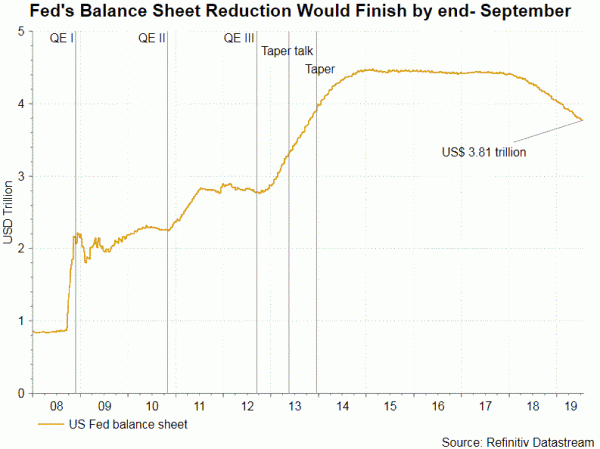 Over the past months, Fed chair Jerome Powell, as well as other members, has given sufficient signals for a rate cut in July. Although economic growth has remained firm, inflation has recently weakened. Unresolved trade war between the US and China suggests risk to growth is to the downside. An insurance rate cut is necessary to stem sharp economic slowdown in the future. The market has currently priced in a 78% chance of a -25 bps cut and a 22% chance of -50 bps cut, compared with bets of 68% and 32%, respectively, last month. We expect the trimmed expectations of a deeper cut are driven by better economic data for June.
Over the past months, Fed chair Jerome Powell, as well as other members, has given sufficient signals for a rate cut in July. Although economic growth has remained firm, inflation has recently weakened. Unresolved trade war between the US and China suggests risk to growth is to the downside. An insurance rate cut is necessary to stem sharp economic slowdown in the future. The market has currently priced in a 78% chance of a -25 bps cut and a 22% chance of -50 bps cut, compared with bets of 68% and 32%, respectively, last month. We expect the trimmed expectations of a deeper cut are driven by better economic data for June.
GDP growth eased to an annualized +2.1% q/q in 2Q19, from +3.1% in the prior quarter. However, this came in stronger that consensus of +1.8%. Consumption expenditures rose +4.3%, strongest since 4Q17, while government expenditures and gross investment soared +5%, fastest since 2Q09. On the flip side, business investment plunged -5.5%, weakest since 4Q15. On the job market, non-farm payrolls gained +224K in June, beating consensus of +165K. Although the unemployment rate edged higher, by +0.1 percentage point, to 3.7%, it stayed at the lowest level in 50 years. Meanwhile, wage growth soared +3.1% y/y, surpassing inflation. Price levels have stayed below Fed’s +2% target. Headline CPI slowed +1.6% y/y in June, from May’s +1.8%. Excluding food and energy prices, core CPI climbed to +2.1% from +2% in May. However, a downtrend appears to have developed over the past few months. PCE deflator is expected to steadied at +1.5% y/y in June, while the core reading could have improved to +1.7% from May’s 1.6%.
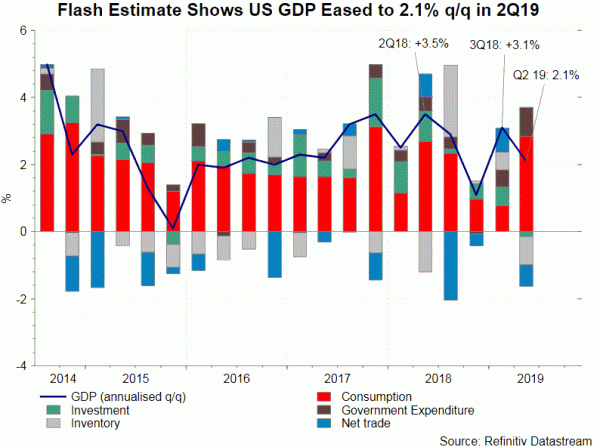
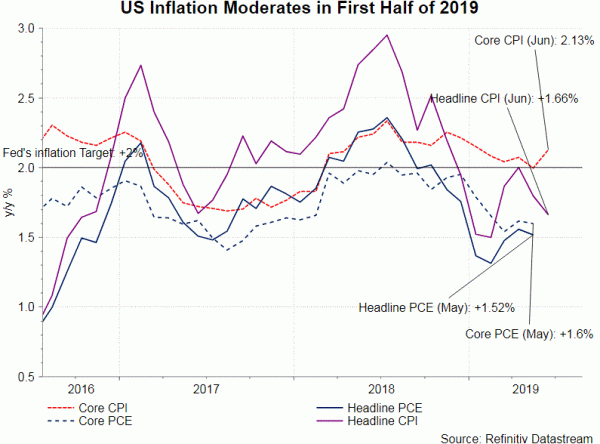
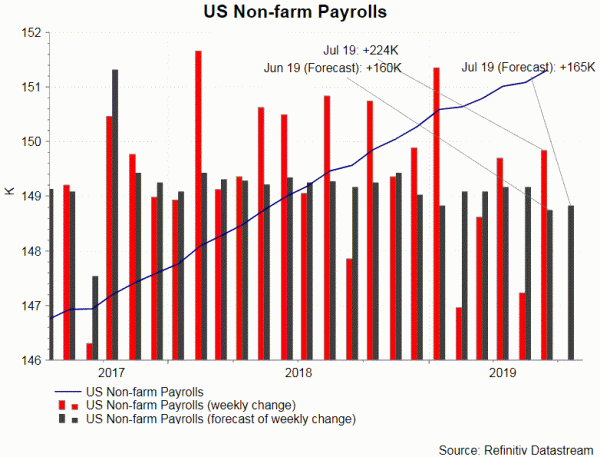
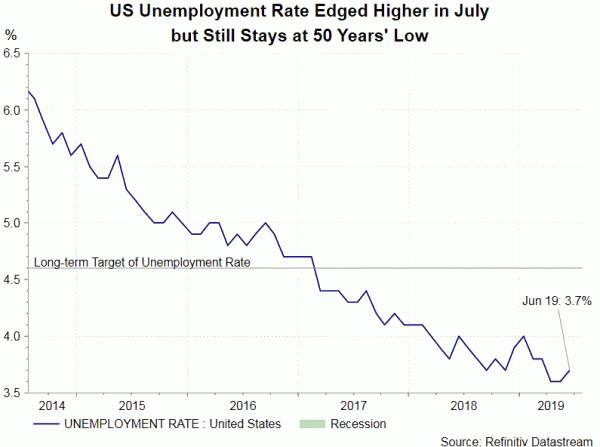 There will be no updated economic projections and median dot plot in July. At the policy statement, we expect the members to upgrade the assessments of economic development due to better- than- expected performance in the 2Q19 GDP growth and June’s job report. The pleasant surprises have also reduced the likelihood of a -50 bps rate cut this month, though an insurance cut of -25 bps is a done deal. Indeed, a -25 bps cut is far from unanimous. Kansas City Fed President Esther George and Boston Fed Eric President Rosengren have indicated their preference for leaving rates unchanged. Besides citing better data flow, Rosengren warned that “risk-on behavior actually makes an eventual pullback sometime in the future more costly”.
There will be no updated economic projections and median dot plot in July. At the policy statement, we expect the members to upgrade the assessments of economic development due to better- than- expected performance in the 2Q19 GDP growth and June’s job report. The pleasant surprises have also reduced the likelihood of a -50 bps rate cut this month, though an insurance cut of -25 bps is a done deal. Indeed, a -25 bps cut is far from unanimous. Kansas City Fed President Esther George and Boston Fed Eric President Rosengren have indicated their preference for leaving rates unchanged. Besides citing better data flow, Rosengren warned that “risk-on behavior actually makes an eventual pullback sometime in the future more costly”.
On the forward guidance, we expect the Fed reiterate that it “will closely monitor the implications of incoming information for the economic outlook and will act as appropriate to sustain the expansion”. We do not expect any change on the reduction of balance sheet. Indeed, the Fed announced in May that it is now on schedule to unwind US$35B per month in May through September. The process will finish at the end of September 2019.












